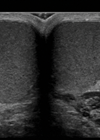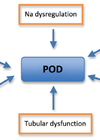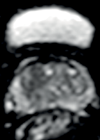Features archive for 2015
Peno-scrotal extramammary Paget’s disease
Epidemiology Extramammary Paget’s disease (EMP) is a rare intraepithelial neoplasm, which is rarely invasive and has an incidence of six per million person-years as calculated by a European SEER analysis [1]. It usually affects apocrine gland-bearing areas, especially the vulvar,...
Guide to gaining approval for a clinical study
This article focuses on gaining approval for clinical research involving NHS patients, although the principles can be applied to other types of research. It can be quite a daunting process for the uninitiated applicant. Often it can be made less...
Bladder cancer – an overshadowed ‘volcano’
Bladder cancer has often been overshadowed by the limelight of prostate cancer. However, of all the urological cancers, bladder cancer is the only one which has shown a slight decline in age-standardised five-year survival rates over the last couple of...
HIV / AIDS – implications for the urologist
“It’s no fun to have HIV even though it’s viewed as a chronic, controllable disease. It means being wedded to the health system.” - Philip Berger, Associate Professor in the Department of Family and Community Medicine, Toronto, Canada; and leading...
Fournier’s gangrene
Introduction Fournier’s gangrene (FG) is a rare but fulminant form of infective necrotising fasciitis affecting the perineum and external genitalia, which can rapidly progress along fascial planes. It most commonly affects men, but can occur in women and children, with...
What to expect when meeting a statistician
There are a growing number of statisticians working closely with medics from all specialties. They have different training but they are driven by the same goal: to perform high quality evidence-based clinical research [1,2]. In a perfect world we would...
Testicular microlithiasis
Introduction Testicular microlithiasis (TML) was originally described in 1970 in a healthy four-year-old boy [1] and the first paper regarding microlithiasis as an entity seen on ultrasound was published in 1987 [2]. Testicular microlithiasis is seen on ultrasound as small,...
Introduction to prostate cryotherapy
Introduction Cryotherapy was first described by Dr James Arnott in 1850 where he used crushed ice and salt to get temperatures as low as -24oC, in the treatment of cervical and breast tumours [1]. The literature on prostatic cryotherapy dates...
Surgical video – part 1: intraoperative video recording and storage
The use of digital technology has progressed in leaps and bounds and nowhere is this more apparent than in medicine and surgery. Footage of live surgery is now easily accessed on the internet or displayed at conferences. Thus, the 21st...
An MA in medical education – is it for you?
I have recently completed a three-year MA in medical education at the University of Winchester, which has been an edifying experience. The following article may appeal to readers who are considering such a venture. I have been a consultant for...
A guide for the assessment and management of post-obstructive diuresis
Acute urinary retention is a common condition encountered in the emergency situation and is initially managed by urethral catheterisation. This is often performed by nursing staff or junior doctors. Post-obstructive diuresis (POD) is a specific entity which may occur post...
Use of MRI in the evaluation of prostate cancer: part 2
Diffusion weighted imaging and contrast enhanced imaging Introduction Magnetic resonance imaging (MRI) is widely used in localisation, staging and post-treatment follow-up of prostate cancer. In the previous issue, we discussed the usefulness of MRI in depicting prostate anatomy and pairing...













